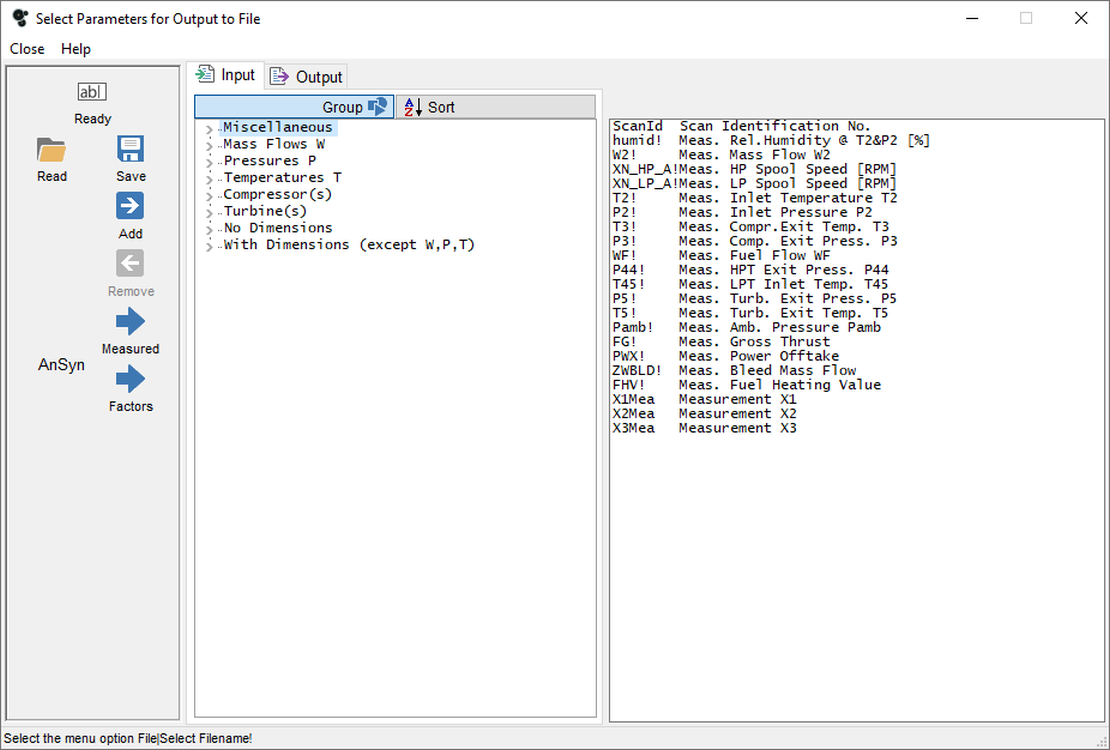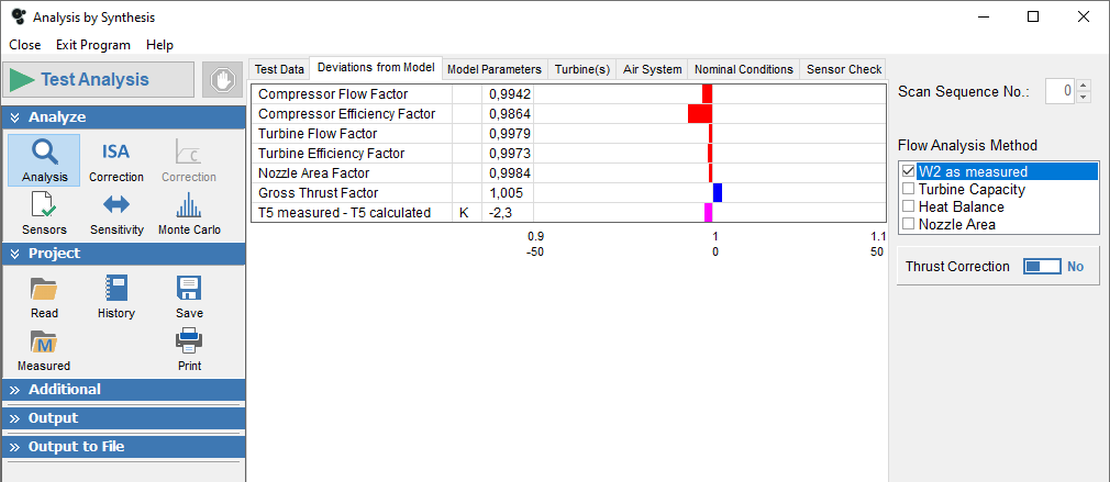Maintenance costs and unscheduled downtime have a big impact on the profitability of aircraft engines and power plants. Reliable information about the condition of aircraft engines (or gas turbines) is critical to their operators. With GasTurb, measured data can be used to investigate the condition of gas turbine and aircraft engine components, so enabling the operators to enhance their understanding of the operational capabilities of their aircraft engine or gas turbine.
Model-Based Performance Analysis
In conventional engine performance analysis, performance data - such as specific fuel consumption, mass flows and component efficiencies - are calculated from measured data. The results can then, for example, be compared to the nominal performance, or in some cases, to a development target. Interpretation of the results is limited when the flight conditions or power settings vary from the nominal values.
GasTurb enables a meaningful evaluation of measured data under any test conditions. Test analysis and performance prediction are combined in the program.
For this purpose, a performance model of the engine under analysis is first developed by the user. The resulting information is then used in the Model-Based Performance Analysis, also known as Analysis by Synthesis (AnSyn). The method matches the measurement data to the model data via AnSyn-Factors. For each component there is a capacity and efficiency factor. The factors indicate the extent to which each individual component behaves differently to the model. The method may be used during engine development as well as in engine maintenance shops. Further information can be found in the GasTurb manual and several worked examples in the book.

Performance Monitoring
In most cases, such as when an engine is installed in an aircraft, its mass flow, bypass ratio and thrust are not measured. Despite these and potential additional measurement limitations, the Analysis by Synthesis (AnSyn) method can still be used. The user can replace unknown properties with assumptions. For example, the bypass ratio can be determined by assuming an unchanged HPT flow capacity.
With the majority of these assumptions, for example, when inflight instrumentation is being used, the results will not be of the same quality as those obtained from test rig data. This needs not be an issue however, since the absolute values are not the primary interest. Instead, it is how the engine has changed over time that occupies our attention. By using AnSyn factors, it is possible to relate the overall change to the individual engine components.
This process can even be automated. GasTurb offers DLLs which allow an airline to set up automated model calculations for fleet monitoring. These DLLs can be integrated into the end user’s own software environment. More information on GasTurb DLLs can be found here.

